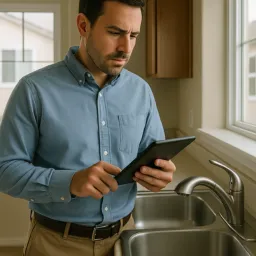
Introduction
Owning a rental property is a fantastic investment, but it comes with responsibilities. One of the most critical—yet often overlooked—tasks is the Condition Assessment. Whether you’re a hands-on landlord or working with a professional team, routine Condition Assessments safeguard your property, ensure tenant satisfaction, and keep you in compliance with local regulations.
Owning a rental property is a fantastic investment, but it comes with responsibilities. One of the most critical—yet often overlooked—tasks is the Condition Assessment. Whether you’re a hands-on landlord or working with a professional team, routine Condition Assessments safeguard your property, ensure tenant satisfaction, and keep you in compliance with local regulations.
Why Condition Assessments Are Essential

☑ Identify small issues before they escalate into costly repairs.
☑ Confirm that tenants are following lease terms.
☑ Reduce liability risks by addressing safety concerns.
☑ Document the property’s condition for future disputes or insurance claims.
Ignoring these assessments could lead to hidden damage, unauthorized occupants, or neglected maintenance—all of which hurt your bottom line.
What to Review During a Condition Assessment
A thorough Condition Assessment covers interior and exterior aspects. Here’s a helpful checklist:
Exterior:
☑ Roof, gutters, and drainage.
☑ Landscaping and exterior walls.
☑ Windows, doors, and paint condition.
Interior:
☑ Smoke and CO detector functionality.
☑ Plumbing leaks and moisture issues.
☑ Appliance conditions and general cleanliness.
☑ Signs of unauthorized pets or occupants.
Always respect tenant privacy by providing appropriate notice per local laws.
Exterior:
☑ Roof, gutters, and drainage.
☑ Landscaping and exterior walls.
☑ Windows, doors, and paint condition.
Interior:
☑ Smoke and CO detector functionality.
☑ Plumbing leaks and moisture issues.
☑ Appliance conditions and general cleanliness.
☑ Signs of unauthorized pets or occupants.
Always respect tenant privacy by providing appropriate notice per local laws.
How to Document Effectively

☑ Take clear photos of property conditions and any issues.
☑ Use a digital checklist for organization.
☑ Record dates, times, and tenant conversations.
☑ Maintain records for potential disputes or claims.
Let Croskey Real Estate Handle It
Failure to perform regular Condition Assessments can result in:
☑ Expensive, preventable repairs.
☑ Tenant dissatisfaction and high turnover.
☑ Legal and insurance risks.
☑ Declining property value.
☑ Expensive, preventable repairs.
☑ Tenant dissatisfaction and high turnover.
☑ Legal and insurance risks.
☑ Declining property value.
Final Thoughts
Your rental property is a business, and routine Condition Assessments are essential for its success. Whether you manage it yourself or prefer professional support, Croskey Real Estate is here to help protect your investment.
Contact us today to schedule your next Condition Assessment and keep your property thriving.
Contact us today to schedule your next Condition Assessment and keep your property thriving.

